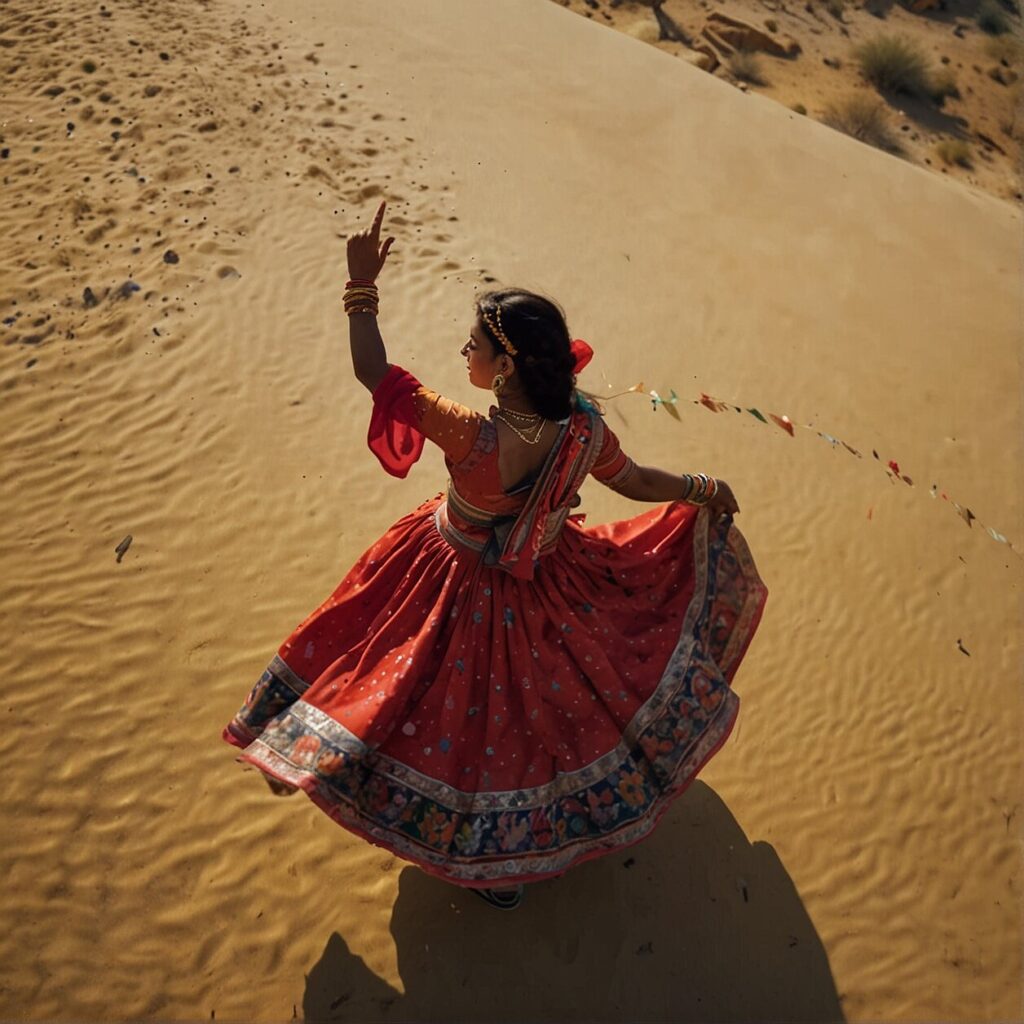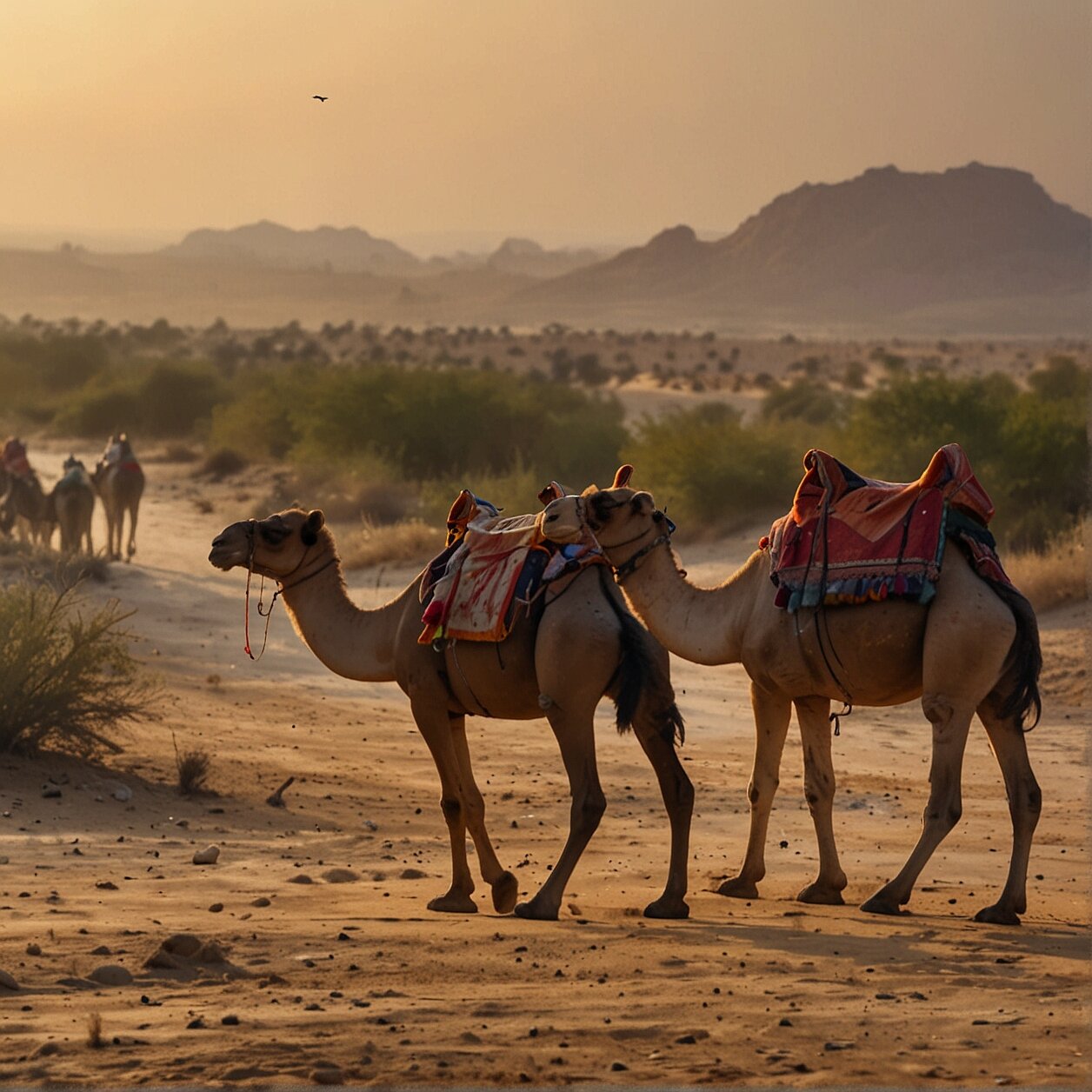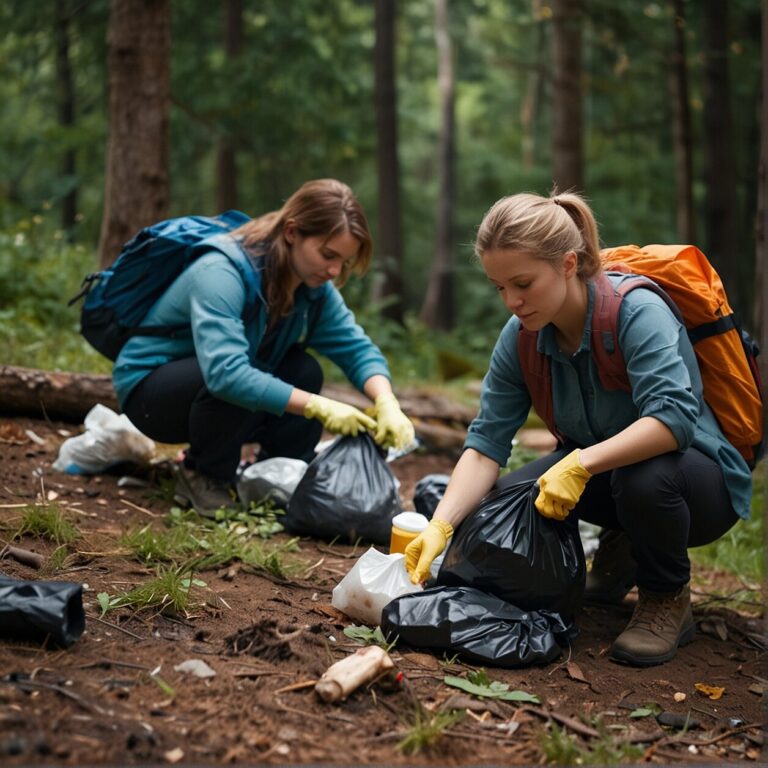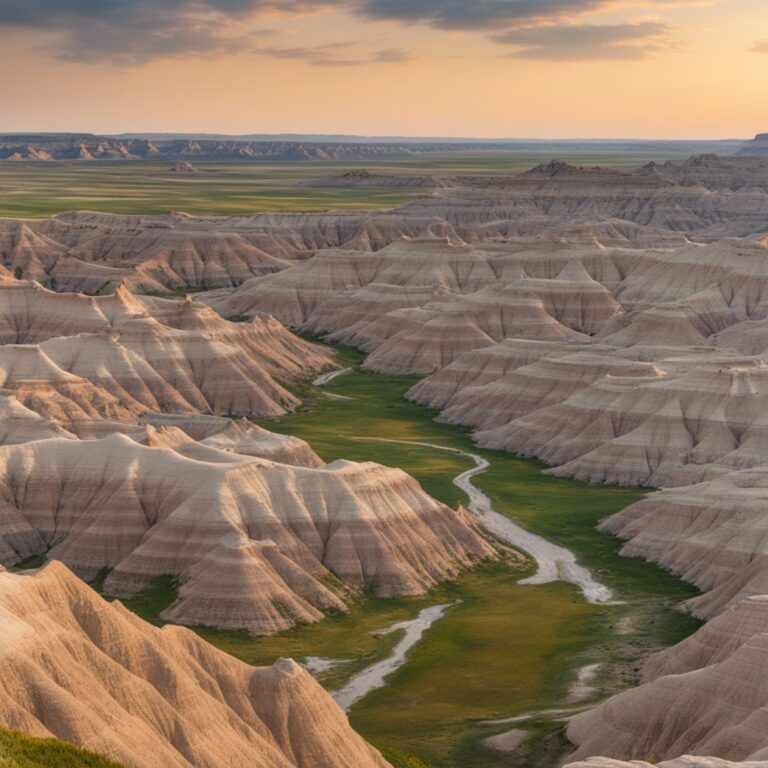Dwelling in the Dunes: A Unique Home-stay with Rajasthan’s Dessert Nomads, India
Imagine you’re in Rajasthan, that gem of a region in Northwestern India, famed for its fortresses and palaces—but beyond those architectural marvels, there’s something you might have overlooked: the desert nomads. Yes, these wanderers have transcended the challenges of the harsh desert environment of the Thar, not only surviving but thriving in conditions that seem nearly impossible to the rest of us, with their unique lifestyle leaving many intrigued.
This transcendent existence of theirs is no secret, hidden in the sands of time. Rather, it’s an open invitation to grasp an experience of a lifetime—a home-stay with desert nomads. Why just observe from a distance when you can live the nomadic life, immerse in the rusticity, partake in traditional rituals, fathom their survival tactics, and feast on authentic food, all while surrounded by the overawing barrenness of the endless desert.
“Traveling—it leaves you speechless, then turns you into a storyteller.” – Ibn Battuta
With a host of vibrant festivals, an array of desert-adapted transport modes, and survival techniques that lend themselves to a nomadic curriculum, you’ll return home full of stories to tell, all while fostering a newfound respect for their way of life. Does it pique your curiosity? Ready to unearth some nomadic secrets? Pack your adventurous self, let’s start this journey then!
Unraveling the Thrill of a Nomadic Home-stay
Embarking on a nomadic home-stay in the sands of Rajasthan, is nothing short of stepping into the pages of a vividly narrated story. You feel yourself plunging into an intriguing world, where every grain of sand whispers tales of cultural richness and wellsprings of survival techniques crafted into a resilient lifestyle.
A key aspect of this unique voyage is experiencing the simplicity of desert life. Far removed from the cacophony of bustling Indian towns, this tranquil oasis presents a stark, yet beautiful contrast. The nomadic way of life, essentially tied to the ebb and flow of desert dunes, unravels the cogs that make this machinery work seamlessly amidst harsh terrains. Striking up a camaraderie with beings born of the desert, like Kheta, is a part of the home-stay experience. With his traditional Rajasthani attire fluttering in the desert wind, Kheta leads you on non-touristy camel safaris, skirting the beaten path. He and his trusty camel offer you a sneak peek into the raw and unadulterated side of the desert. As you perch yourself atop this ‘ship of the desert’, you navigate the sands just like Rajasthan’s nomads have done for centuries. Each stride of the camel mirroring the undulating waves of the sands beneath, transporting you into a world that time seems to have bypassed.
You’ll find Rajasthan’s nomads to be animated storytellers, and they love to open their hearts out to curious listeners. Their vibrantly colored turbans, the sparkle in their eyes, and their feisty souls add an unusual charm to the piercing sands all around. One conversation with them and you’ll find yourself lost in their tales of courage and survival, punctuated with hearty laughter and life lessons scraped from the underbelly of the desert.
Surpassing the Sands: Survival Tactics of the Nomads
Pulling off survival in the Thar desert isn’t for the faint-hearted. But for the hardy desert nomads of Rajasthan, it’s an art they’ve perfected over centuries, making the sandy wilderness their home.
First things first, let’s talk about water. How do they find it amidst this desert spread? These nomads have a keen knowledge of their surroundings. They know where to find natural ‘bheris’ or water pits in the desert, and have honed their survival instincts to spot signs of water sources, such as the presence of specific insects and birds. Even the direction and behavior of the wind, as well as shifts in the sand, offer clues to its location.
It’s also fascinating how these nomads adapted their diet for desert living. You’d wonder, what grows here? How do they sustain themselves? Fact is, desert plants like ker sangri and khejri, which are rich in nutritional content, form their staple diet. And then there’s the wide variety of dairy products courtesy of the camels they rear, which provide them with sustenance in this tough terrain.
Apart from diet and water, shelter is another vital survival aspect. Traditional dwellings of these nomads, known as ‘Deras,’ are a true testament to their exceptional adaptation skills. Made using locally available materials, these homes provide comfortable living spaces that stay cool during the scorching hot days and warm during the cold desert nights.
Finally, coping with the shifting sands needs navigation skills par excellence. Those who live here have mastered the art of reading the stars, and also use their understanding of animal behavior as tools for wayfinding in this unpredictable landscape.
Thus, by harnessing the power of their surroundings and employing resourcefulness, these desert nomads have developed incredible survival tactics, making life in the harsh Thar desert not just possible, but vibrant and rich, too.

In the Heart of the Dunes: A Daily Life Experience
Immersing yourself in the desert nomadic life, you realize how the simplicity of the desert contrasts sharply with the bustling chaos of Indian towns. This setting offers a tranquil oasis, a much-needed respite from the cacophony of urban life. Life’s basic necessities take precedence here, spurring an appreciation for the essentials that often get lost amid worldly luxuries.
You’ll find that a typical day is often dictated by survival needs. Need to fetch water, for instance, involves a long trek to the nearest water source, a task both practical and social. A camel Safari is another fascinating aspect. Deciding on a one-day camel Safari, you can watch the sun melt into the dunes after three delightful hours of camel riding, casting a warm, orange blaze over the sands. This experience, raw and unique, is a testament to the nomads’ navigation expertise and their intimate relationship with nature.
Going off the beaten path is a valuable approach to desert safaris in the Thar Desert. Opting for an authentic experience, like the one offered by Kheta, allows you a glimpse at a non-touristy side of Rajasthan. This way, you experience the real flavor of the land, immersing in the local culture, understanding their survival tactics, and appreciating their humble yet rich way of life.
Remember, most travelers intend to embark on a camel safari to the desert for at least one day. But the magic lies in the monotony in between. It’s in the daily life routines, the simple, salt-of-the-earth practices, and the indomitable spirit of the desert nomads that you get the true essence of desert life in Rajasthan.
At the Desert’s Hearth: Savoring the Flavors of Rajasthan’s Nomadic Cuisine
Imagine the warm sun setting over the vast desert, painting the sky in hues of pink and orange. Nearby, under the makeshift canopy, a hearty and aromatic meal is being prepared on an open flame by the nomads. This is exactly the kind of authentic and immersive experience you can expect from your home-stay in Rajasthan.
If you’re a food enthusiast, the culinary journey here will be a revelation. Rajasthan’s nomadic cuisine is a riot of flavors. It’s rustic, vivid, and deeply tied to their survival tactics, climate conditions, and culture.
Regardless of their circumstance, the nomads of Rajasthan have never shied away from creating flavorful and rich cuisine. Their everyday meals typically consist of substantial grains, hearty legumes, and a generous use of spices. Rotis made from millets, sorghum or barley are common portions of their meal, often paired with dal (lentil soup), local vegetables, or dishes made with goat meat or camel milk. These traditional dishes reinforce the human body, providing the much-needed energy and nutrition to conquer their daily challenges.
Remember, meals here are not just about sustenance. They’re a community affair, an occasion for storytelling, sharing experiences, and deepening connections. As you gather around the fire under the starlit desert sky, sharing a meal with your hosts, don’t miss out on the folk stories and songs – they offer an intimate glimpse into the vibrant culture and life of the desert nomads.
Also, witnessing first-hand how these meals are prepared using traditional cooking methods and locally-sourced ingredients can be a humbling and enlightening experience. The nomads, despite the harshness of the desert, have found ways to imbue their cuisine with enticing flavors and textures. The culinary skills these nomads possess, backed by their unwavering hospitality, and the joy with which they invite you to partake in their meals, make this an unforgettable experience.
You won’t find the mastery and authenticity of these recipes in any urban, luxurious restaurant. A home-stay in the desert is an opportunity to delve deeply into the real, unadulterated culinary heritage of Rajasthan.
So, prepare yourself for the thrill of this gastronomic journey through the Thar Desert. Your palette is set to be tantalized and your heart touched by the hospitable desert nomads of Rajasthan.

Across the Sands: Transportation and Navigation Tactics of the Nomads
Imagine navigating through vast expanses of sand, not a road or milestone in sight. Yet, the desert nomads of Rajasthan move across this terrain with an enviable ease and intuition. A lack of conventional mapping or GPS technologies doesn’t hinder them. Instead, they’ve calibrated their senses to read the desert’s pulse, read the subtleties of wind patterns, the shifting sands, and the position of the stars, transforming the arid desert into a reliable guide.
Their primary form of transportation? The beloved “Ship of the Desert” – the dromedary camel. Rugged and resilient, these creatures are perfectly adapted for the harsh desert life, capable of going for days without water and feeding on the sparse vegetation scattered about the desert. They aren’t just a mode of transportation but symbolize an invaluable lifeline for the desert nomads.
Participating in a nomadic home-stay offers an opportunity to engage with these majestic beasts up close. From the simple gestures of tending to them, feeding them, to the exhilarating experience of a camel ride underneath a sky filled with stars – a joy that is simple yet profound.
What’s even more interesting is that the nomads offer free transport from Jaisalmer in traditional fashion. Yes, you guessed it! Expect a camel ride across the desert! Riding alongside these seasoned navigators gives you a true taste of their exceptional navigation capabilities.
This intimate experience with the nomadic lifestyle does not just offer an understanding of their survival techniques, but allows for an appreciation of the harmony they share with their environment, an environment that at first appears inhospitable but upon closer look, brims with life and charm.
FAQ’S
As you plan for this extraordinary journey, it’s natural to have some queries bothering you. With this culmination of frequently asked questions, we aim to address your concerns and adequately prepare you for a remarkable homestay experience with the Rajasthan’s desert nomads. Dive in!
How safe is a home-stay with desert nomads in Rajasthan?
Your safety during a home-stay with the desert nomads in Rajasthan is a crucial consideration. By and large, the nomadic people are known for their hospitable nature and have been hosting tourists for years. They do have an understanding of basic safety measures, having established codes of behavior to ensure the well-being of their guests.
The objective of the nomads and tour organizers alike is to ensure that you wholeheartedly enjoy the immersion into their lifestyle, without having to worry about potential hazards. Additionally, communication with your home-stay host, local tour guides or agencies will prove invaluable for understanding the do’s and don’ts during your stay.
In the hands of Kheta, or the spirited locals like him, your safety is a top priority. Authentic reviewers, who have experienced camel safaris and other activities first-hand, repeatedly vouch for this warm community’s regard for their guests. However, one must remember that getting travel insurance and observing individual caution will only add to a flawless, memorable home-stay experience.
Lastly, as with any travel, common sense regarding personal belongings and health is always crucial. Packing suitable attire, respecting local customs, and maintaining personal hygiene will go a long way in ensuring an enjoyable and safe journey through the sandy countryside near Nawalgarh, Jodhpur, Jaisalmer, and other areas.
What are the key festivals celebrated by Rajasthan’s desert nomads?
The desert nomads of Rajasthan are vibrant souls, known for their cultural richness and unique traditions. An integral part of their culture is the celebration of numerous local festivals, each with its own distinct flavor, colors and fervor.
Holi, the festival of colors, marks the arrival of spring and is regarded as one of the most vibrant celebrations. Nomads gleefully paint each other with colors and partake in folk dances and music around bonfires. They share stories, laugh together, strengthening their community bond in these joyous times.
Navaratri, a nine-night festival honoring the Hindu goddess Durga, is another major festivity. Art and culture thrive during this time, with traditional Garba dances taking place around a central statue of the Goddess. This ritual brings together both locals and visitors in the spirit of unity and respect for the divine.
Diwali, the festival of lights, is a spectacle to witness among the nomadic community. Amidst the endless expanse of the desert, the nomads light diyas (traditional oil lamps), decorate their huts with colorful rangolis (artistic patterns made with colored powders), and set off firecrackers to celebrate the victory of light over darkness.
Kite Festival, meanwhile, transforms the desert sky into a vibrant canvas of color. Every January, residents and visitors alike engage in friendly kite battles, while feasting on local sweets and dishes.
The intriguing component about the nomadic festivals of Rajasthan is their simplicity coupled with the vivaciousness. Observing these occasions on your home-stay experience, will offer you an authentic experience of cultural immersion and an intimate understanding of their communal spirit.
What kind of accommodation can I expect during a home-stay with desert nomads in Rajasthan?
During your home-stay with the Rajasthan desert nomads, be prepared to relinquish the comforts of urban life and embrace the refreshing simplicity of the desert dwelling experience. Unlike conventional hotels or resorts, accommodation here comprises mostly of traditional, eco-friendly huts built with locally sourced materials, providing a close-to-nature living experience.
These huts, known as ‘Bishnoi Dhani’, are well ventilated, complete with cozy bedding on floor mats, often festooned with local artworks. The huts are built to withstand the harsh desert climate, providing cooling refuge in the sweltering summer and cozy warmth in the winter. Predominantly, these huts have no electricity but are lighted by oil lamps, creating a serene amb that transportsience you to simpler times.
Bathrooms in these abodes are usually separate, with basic amenities in place. Water is a precious commodity in the desert, hence, you might find the locals practicing water conservation methods, which could be an essential life lesson to bring back home.
Remember, the charm of a home-stay lies in living a life akin to the nomads’, providing you with an opportunity to step out of your comfort zone and experience the vibrant, resilient spirit that exemplifies their lifestyle.
At times, depending on the activity of the nomadic group, you may also spend a night under the open sky, warmed by a campfire, beside the grazing camels. This unfiltered encounter with the starlit desert night, the sounds of settling sands, camels, and the cool breeze is an unforgettable aspect of the home-stay experience.
We recommend you open your heart to this culturally rich and unique experience, and welcome the chance to understand and appreciate a way of life so distinct from your own.
How can I book a home-stay experience with Rajasthan’s desert nomads?
Booking a home-stay experience with the desert nomads of Rajasthan might seem like a daunting task due to the migratory nature of these tribes. However, with the advent of growing tourism and a greater inclination towards authentic and intimate travel experiences, it has become much more straightforward.
Among the locals who have stepped up to facilitate such unique home-stay experiences is Kheta, a Rajasthani local clad in traditional attire who amicable demeanor has earned him praises from fellow travellers. Kheta offers an offbeat camel safari and home-stay experience in the desert without the hassle of dealing with larger travel agencies. According to many rave reviews, this gentleman takes great pains to ensure every minute detail is taken care of, promising both safety and an enriching cultural immersion.
To reserve your home-stay with Kheta or with the other desert nomads, it’s advisable to reach out directly to them and confirm your stay. Many of these locals, despite living in the desert, have access to mobile communication and are responsive to direct inquiries. This way, the transparency of the entire process is maintained, and it also directly contributes towards the betterment of their livelihood.
You can also make your bookings through trusted local tour operators who have strong connections with the desert communities. Several of these operators can be found online to plan your stay properly. The authenticity and credibility of such stay experiences can be validated by referring to online reviews and traveller’s testimonials on popular travel platforms.
Also, make sure to clarify details about transport to and from Jaisalmer or any other nearby city as part of your booking, as the desert nomads offer free transportation, making the journey to your desert home-stay a breeze. Make your reservations well in advance, particularly during the peak travel season, to ensure you don’t miss out on this one-of-a-kind experience.
How do Rajasthan’s desert nomads deal with medical emergencies?
Worry not when it comes to healthcare among the nomadic communities of Rajasthan. Even though these desert nomads live remote lives, they have developed their own unique approaches to handle medical emergencies. Traditional healing practices, heavily reliant on the local flora and fauna, are intrinsic to their lifestyle. A comprehensive knowledge of medicinal plants and their uses is passed down through generations, and these herbs take precedence when dealing with common ailments.
For more severe health issues, these communities have developed an efficient alert and communication system. This involves a relay system of messages, transmitted from one nomad to another, to reach the nearest town or city with medical facilities. Thanks to the widespread use of mobile technology, this communication has become even more effective, ensuring timely medical intervention. However, the contemporary era has witnessed some evolutions in the nomadic lifestyle. Many of them are collaborating with medical outreach programs organized by non-profit organizations and local government bodies to deliver primary health care services to these remote areas. These initiatives typically include regular medical camps where professionals offer checkups and treatments for various diseases. The healthcare providers are also training some members of these communities in rudimentary medical procedures to deal with emergencies.
In some cases, medical emergencies demand transportation to urban areas. It’s here where their unique transportation tactics come into play. Remarkably adapted to their sandy surroundings, they can swiftly navigate their way across the landscape to reach the nearest town for medical attention. Their indispensable companions? The trusty camels, who also serve as their main means of transport.







